Small signals that reveal your shifting mood.

Cats may seem aloof on the surface, yet their awareness of human emotion runs far deeper than most people ever assume. They watch us constantly, storing tiny clues about how we move, breathe and even sit when something feels off. Their sensitivity emerges in quiet moments when we least expect it, revealing a side of them that feels surprisingly perceptive. Many owners only notice in hindsight that their cat reacted long before any words were spoken.
As science explores the emotional bond between humans and animals, researchers continue uncovering how sharply cats tune into our states of mind. They learn our rhythms with steady observation, picking up patterns that shift subtly when sadness enters the room. Each behavior they display becomes part of a gentle narrative that shows how attuned they are to the people they trust most.
1. Cats adjust their body language when your energy drops.
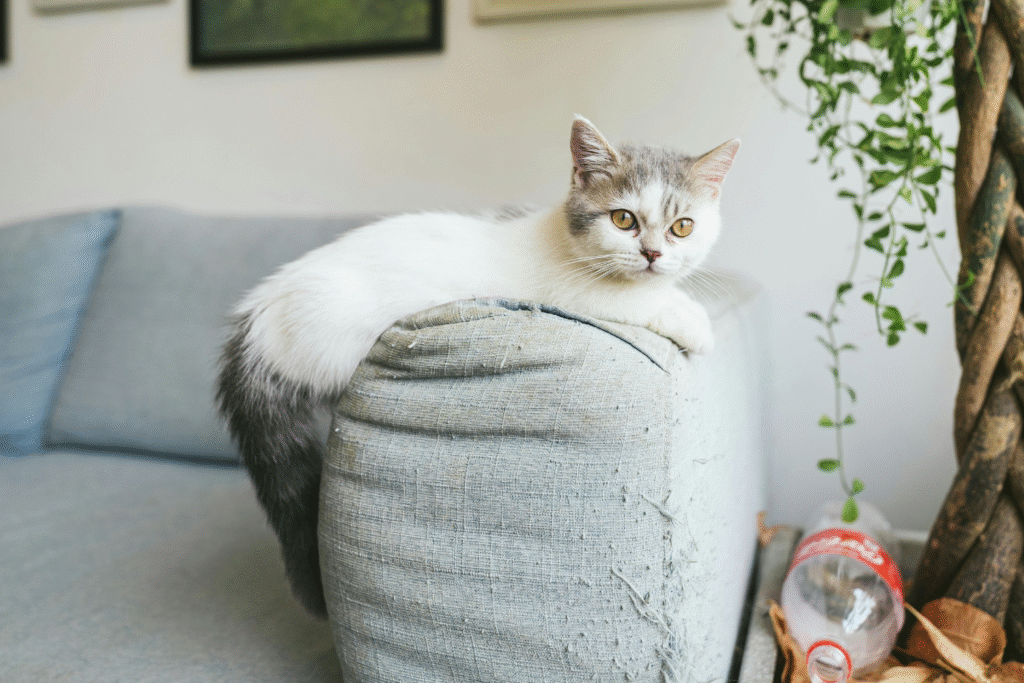
Some cats become stiller or more alert the moment your posture slumps or your movements slow. Their gaze lingers, watching how your body shifts as sadness settles in. They often tilt their head or stretch toward you as if testing the emotional temperature of the room. These small changes come from their ability to read subtle cues in the way humans carry themselves when stressed.
As your energy remains low, they respond with softened behavior. Their tail may relax, and their breathing matches the calm pace they sense from you. This quiet synchronization becomes their first way of acknowledging your emotional shift, leading smoothly into deeper signs of awareness.
2. A cat listens closely to changes in your voice.
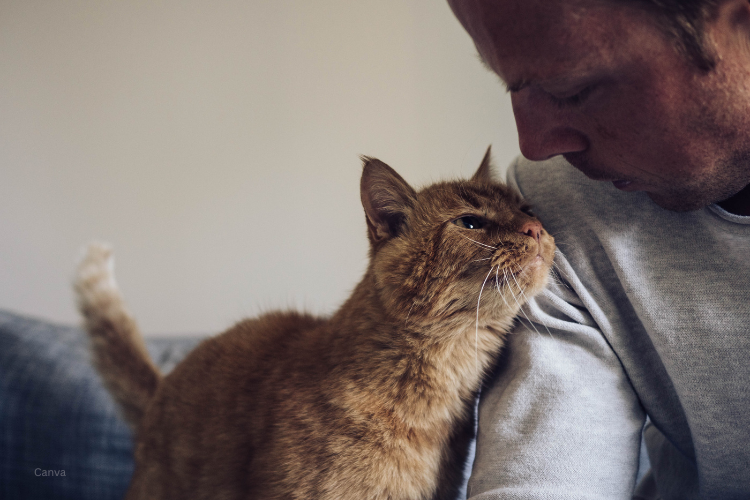
Your tone often shifts before you say anything direct, and cats notice this instantly. Softer sounds, slower speech or disrupted rhythms all alert them that something feels different. They may pause their grooming or glance over quickly as they register your emotional signal. Their ears flick and turn, narrowing in on the sound in a way that shows focused attention.
As the mood lingers, they continue monitoring your voice, responding with quiet movements or closer proximity. The more consistently they hear that altered cadence, the more they adapt their own behavior. This sensitivity naturally blends into their next method of detecting sadness.
3. Cats respond to your slower daily movements.

When sadness weighs on you, your footsteps slow, your gestures soften and you hesitate more often. Cats notice the break in routine almost immediately. They may walk closer to your legs or follow you from room to room with unusual steadiness. Their pacing shifts to match yours as if they are trying to stay within your orbit.
As the pattern continues, they adapt their day around your new pace. They linger when you sit, pause when you stand and watch you more carefully. This response comes from the way they memorize daily rhythms and detect any emotional shift reflected in movement.
4. Cats sense changes in your scent during emotional stress.
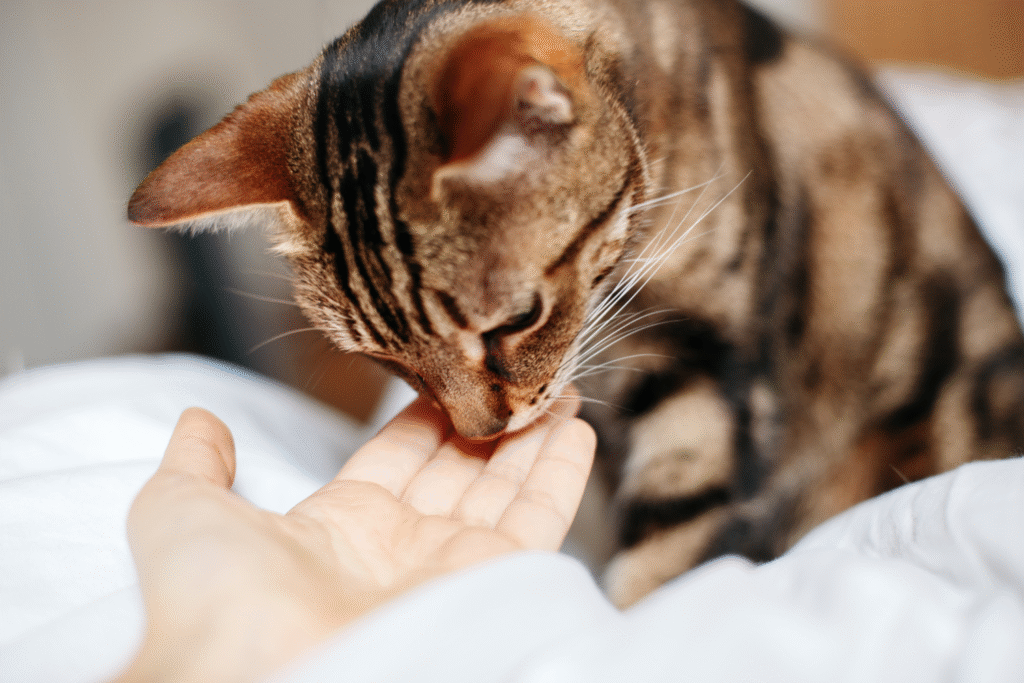
Stress hormones subtly alter human scent, and cats possess a highly refined sense of smell capable of picking up even small chemical changes. When sadness enters your system, those signals shift. Cats may sniff your clothing, your hands or your hair with more interest than usual. Their curiosity reflects more than simple routine inspection.
As they recognize the altered scent, they adjust their behavior to match your emotional state. Some will sit closer, while others remain nearby but give space. Their response varies, yet the motivation stays consistent. They understand something significant has changed, guiding them into their next form of quiet support.
5. Cats monitor your breathing patterns when you’re upset.

Deep sighs, slower breaths or uneven rhythms catch their attention instantly. Cats often lift their head or reposition their body when your breathing changes. They may climb onto your chest, curl against your side or settle near your feet, all while keeping their ears tuned in to your breathing.
As the emotional moment continues, they respond with their own calmer rhythm. Their presence becomes a soft anchor that helps steady the room. This instinctive awareness flows naturally into the next behavior rooted in emotional observation.
6. Cats adjust their proximity based on your mood.
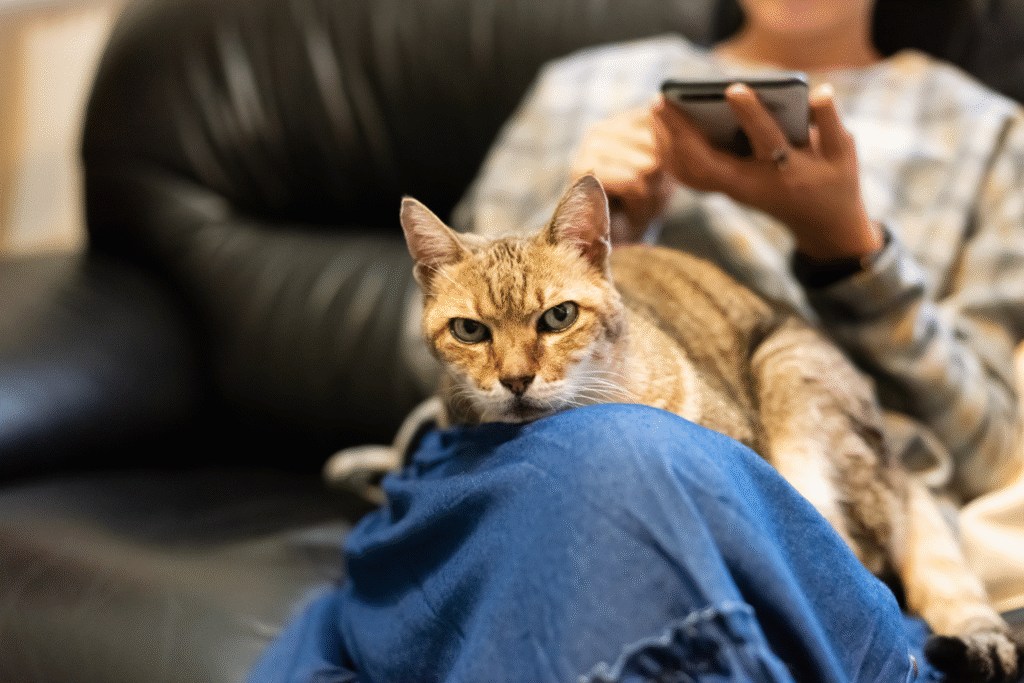
Some cats instinctively move closer during sadness, settling on your lap or leaning against your leg for comfort. Others choose to lie quietly within reach, offering companionship without overwhelming you. Their decision comes from reading your body language and interpreting your emotional need for closeness or space.
Over time they become skilled at choosing the response that helps you most. Whether they rest beside you or hover near the doorway, their presence reflects deep attunement. This careful balance leads directly into their next emotional insight.
7. Cats pause their routines when they sense emotional heaviness.

A playful cat may suddenly stop batting toys or climbing shelves when it notices your emotional shift. Meals, naps and exploration may briefly fall aside as they assess your state. Their stillness is intentional, reflecting a pause in their natural curiosity as they prioritize your energy.
As they continue observing, their routine gradually adapts to your emotional rhythm. They may accompany you more frequently or remain settled near familiar spots where you rest. These changes show how attuned they become to emotional imbalance.
8. Cats follow you more closely when sadness deepens.
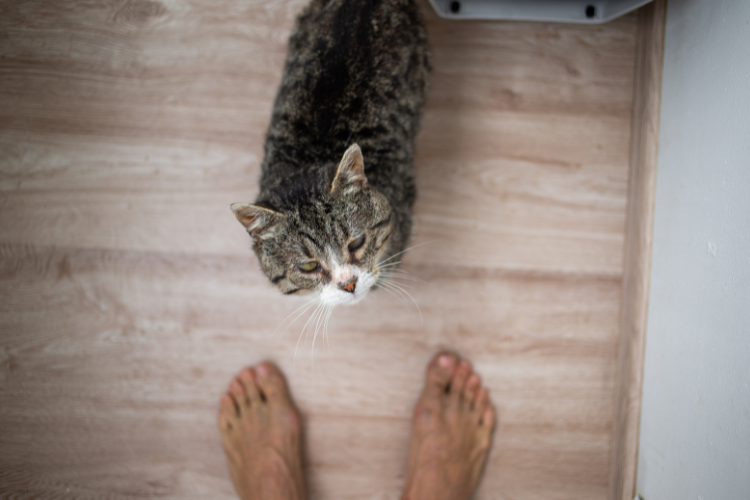
The instinct to monitor you grows stronger when they sense distress. Cats may trail behind you quietly, staying close enough to keep you within sight. Their presence feels subtle yet steady, offering support without demanding attention. This behavior becomes more noticeable during longer emotional moments.
As you move around the home, they remain near doorways or follow your steps with gentle persistence. Their goal is simple. They want to keep track of you until your energy begins to stabilize. This instinctive loyalty sets the stage for one more method of detection.
9. Cats match their mood to yours with remarkable intuition.
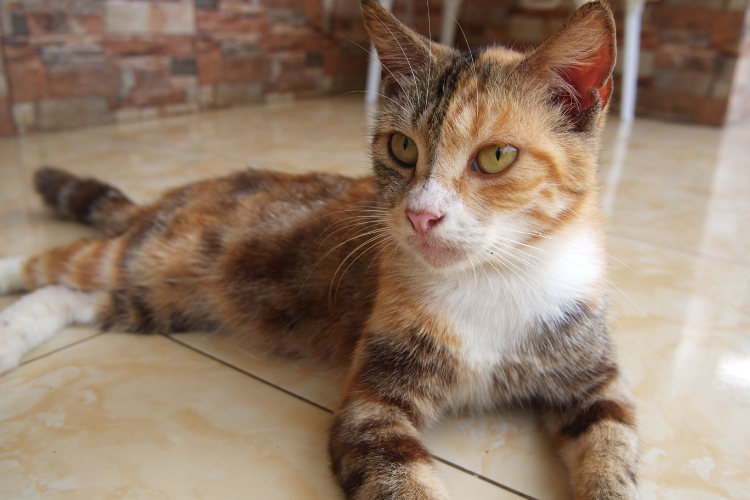
Many cats soften their posture, reduce their playfulness or grow quieter when they sense sadness. They mirror your emotional state with surprising accuracy, creating a calm space that feels soothing rather than disruptive. This response forms from their learned understanding of your daily mood patterns and how those patterns change.
As the emotional moment stretches, their gentle behavior becomes a kind of companionship rooted in empathy. They settle nearby, blink slowly or rest with deliberate ease. Their quiet support often begins before any words are spoken, showing how deeply they recognize your emotional shifts.
